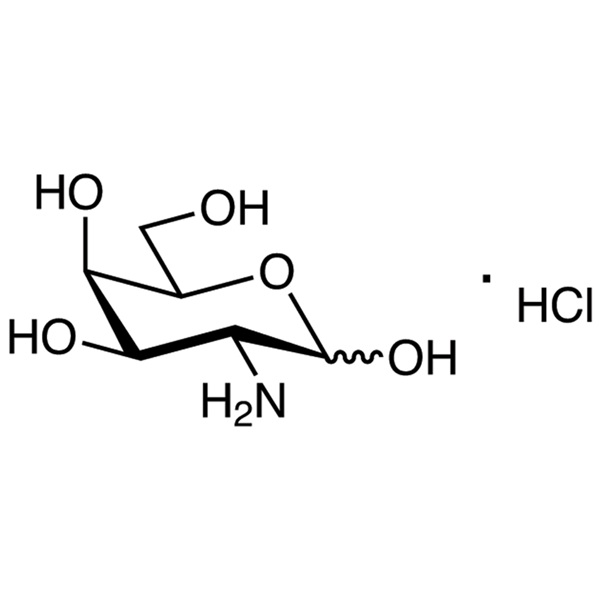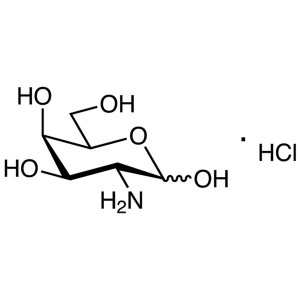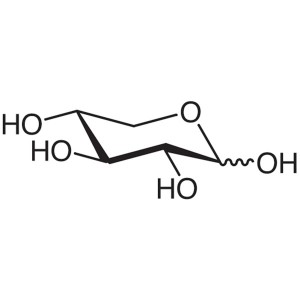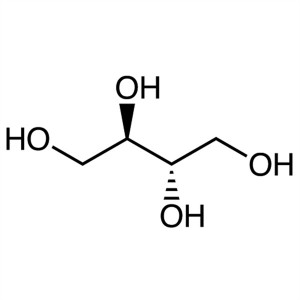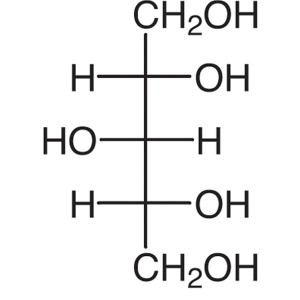D-(+)-Galactosamine Hydrochloride CAS 1772-03-8 Purity >99.0% (HPLC)
Shanghai Ruifu Chemical Co., Ltd. is the leading manufacturer of D-(+)-Galactosamine Hydrochloride (CAS: 1772-03-8) with high quality. Ruifu Chemical can provide worldwide delivery, competitive price, excellent service, small and bulk quantities available. Purchase D-(+)-Galactosamine Hydrochloride, Please contact: alvin@ruifuchem.com
| Chemical Name | D-(+)-Galactosamine Hydrochloride |
| Synonyms | D-(+)-Galactosamine HCl; D-Galactosamine Hydrochloride; 2-Amino-2-Deoxy-D-Galactopyranose Hydrochloride; D-Chondrosamine Hydrochloride; Chondrosamine Hydrochloride; Chondrosamine HCl |
| Stock Status | In Stock, Commercial Production |
| CAS Number | 1772-03-8 |
| Molecular Formula | C6H13NO5·HCl |
| Molecular Weight | 215.63 g/mol |
| Melting Point | 175.0~182.0℃ |
| Sensitive | Hygroscopic. Moisture Sensitive |
| Water Solubility | Soluble in Water |
| COA & MSDS | Available |
| Origin | Shanghai, China |
| Brand | Ruifu Chemical |
| Items | Specifications | Results |
| Appearance | White Crystal Powder | White Crystal Powder |
| Melting Point | 175.0~182.0℃ | 178.0~178.8℃ |
| Specific Rotation | +92.0°~+98.0° (C=1 in H2O) | +97.0° |
| FT-IR | Conform | Conformed |
| Loss on Drying | <2.00% | 0.55% |
| Residue on Ignition | <0.50% | 0.08% |
| Heavy Metals (Pb) | <10ppm | <10ppm |
| TLC | One Point | Conformed |
| Glucosamine | <0.50% (NMR) | No Glucosamine |
| Purity / Analysis Method | >99.0% (HPLC) | 99.3% |
| Infrared Spectrum | Consistent with Structure | Complies |
| Conclusion | The product has been tested and complies with the given specifications | |
Package: Bottle, Aluminium foil bag, 25kg/Cardboard Drum, or according to customer's requirement.
Storage Condition: Keep the container tightly closed and store in a cool, dry (2~8℃) and well-ventilated warehouse away from incompatible substances. Protect from light and moisture.
Shipping: Deliver to worldwide by air, by FedEx / DHL Express. Provide fast and reliable delivery.
How to Purchase? Please contact Dr. Alvin Huang: sales@ruifuchem.com or alvin@ruifuchem.com
15 Years Experience? We have more than 15 years of experience in the manufacture and export of a wide range of high quality pharmaceutical intermediates or fine chemicals.
Main Markets? Sell to domestic market, North America, Europe, India, Korea, Japanese, Australia, etc.
Advantages? Superior quality, affordable price, professional services and technical support, fast delivery.
Quality Assurance? Strict quality control system. Professional equipment for analysis include NMR, LC-MS, GC, HPLC, ICP-MS, UV, IR, OR, K.F, ROI, LOD, MP, Clarity, Solubility, Microbial limit test, etc.
Samples? Most products provide free samples for quality evaluation, shipping cost should be paid by customers.
Factory Audit? Factory audit welcome. Please make an appointment in advance.
MOQ? No MOQ. Small order is acceptable.
Delivery Time? If within stock, three days delivery guaranteed.
Transportation? By Express (FedEx, DHL), by Air, by Sea.
Documents? After sales service: COA, MOA, ROS, MSDS, etc. can be provided.
Custom Synthesis? Can provide custom synthesis services to best fit your research needs.
Payment Terms? Proforma invoice will be sent first after confirmation of order, enclosed our bank information. Payment by T/T (Telex Transfer), PayPal, Western Union, etc.
Hazard Symbols Xi - Irritant
Risk Codes 36/37/38 - Irritating to eyes, respiratory system and skin.
Safety Description S24/25 - Avoid contact with skin and eyes.
S36/37/39 - Wear suitable protective clothing, gloves and eye/face protection.
S27 - Take off immediately all contaminated clothing.
S26 - In case of contact with eyes, rinse immediately with plenty of water and seek medical advice.
WGK Germany 3
RTECS LW5500000
FLUKA BRAND F CODES 3-10
TSCA Yes
HS Code 2940009090
D-(+)-Galactosamine Hydrochloride (CAS: 1772-03-8) is widely used in biochemical research, medical diagnostics, and drug development.
D-(+)-Galactosamine Hydrochloride is used with lipopolysaccharides (LPS) to induce models of acute hepatic failure (LPS/D-GalN-induced liver injury, hepatitis) for therapeutic research to find new drugs.
D-(+)-Galactosamine Hydrochloride is an interfering agent of hepatocyte nucleoside metabolism and can continuously damage liver cells. It is mainly used for the study of liver pathology and biochemistry. The hepatitis model copied with it is close to the pathological changes of human hepatitis, it is reliable and useful for screening and studying anti-hepatitis drugs.
D-(+)-Galactosamine Hydrochloride (CAS: 1772-03-8) can be synthesized from either D-(+)-Glucose or N-Acetyl-D-Glucosamine. The synthesis procedure involves a series of chemical reactions, such as isomerization, epimerization, and deacetylation.
D-(+)-Galactosamine Hydrochloride can be characterized using various techniques, such as nuclear magnetic resonance (NMR) spectroscopy, infrared (IR) spectroscopy, and mass spectroscopy.
Various analytical methods have been developed to quantify D-(+)-Galactosamine Hydrochloride (CAS: 1772-03-8) in complex matrices. These methods include high-performance liquid chromatography (HPLC), gas chromatography-mass spectrometry (GC-MS), and capillary electrophoresis (CE).
D-(+)-Galactosamine Hydrochloride (CAS: 1772-03-8) has been found to have various biological properties, such as antibacterial, anti-inflammatory, and immunomodulatory activities. It is also involved in several metabolic pathways, including the biosynthesis of glycoproteins and mucopolysaccharides.
D-(+)-Galactosamine Hydrochloride (CAS: 1772-03-8) has been found to have low toxicity in scientific experiments. However, it can cause liver damage when administered in high doses or over a prolonged period. Therefore, it is important to use proper safety measures while handling this compound.
D-(+)-Galactosamine Hydrochloride (CAS: 1772-03-8) is widely used in scientific experiments due to its unique properties. It is used as a substrate for enzymes, such as galactosamine transferase and galactosidase. It is also used to synthesize biomolecules, such as glycoproteins and polysaccharides. Additionally, D-(+)-Galactosamine Hydrochloride is used in medical diagnostics to measure liver function using the Galactosamine challenge test.
Research on D-(+)-Galactosamine Hydrochloride (CAS: 1772-03-8) has been focused on its various properties and applications. Recent studies have investigated its role in modulating the immune system and its potential use in drug development.
D-(+)-Galactosamine Hydrochloride (CAS: 1772-03-8) has potential applications in various fields of research and industry. It can be used as a template for designing new drugs and as a precursor for synthesizing biomolecules. Additionally, it has potential applications in agriculture and food industry.
Although D-(+)-Galactosamine Hydrochloride (CAS: 1772-03-8) has various applications, there are certain limitations that need to be addressed. One major limitation is its availability as a starting material. Moreover, its synthesis is expensive and requires sophisticated techniques. Future research should focus on developing new and efficient synthesis methodologies and exploring its potential applications in various fields, such as nanotechnology, biotechnology, and drug development.
D-(+)-Galactosamine Hydrochloride (CAS: 1772-03-8) is an important compound that has various applications in scientific research and industry. Its unique properties make it an attractive option for designing new drugs and synthesizing biomolecules. However, there are certain limitations that need to be addressed, and future research should focus on developing new synthesis methodologies and exploring its potential applications in various fields.

